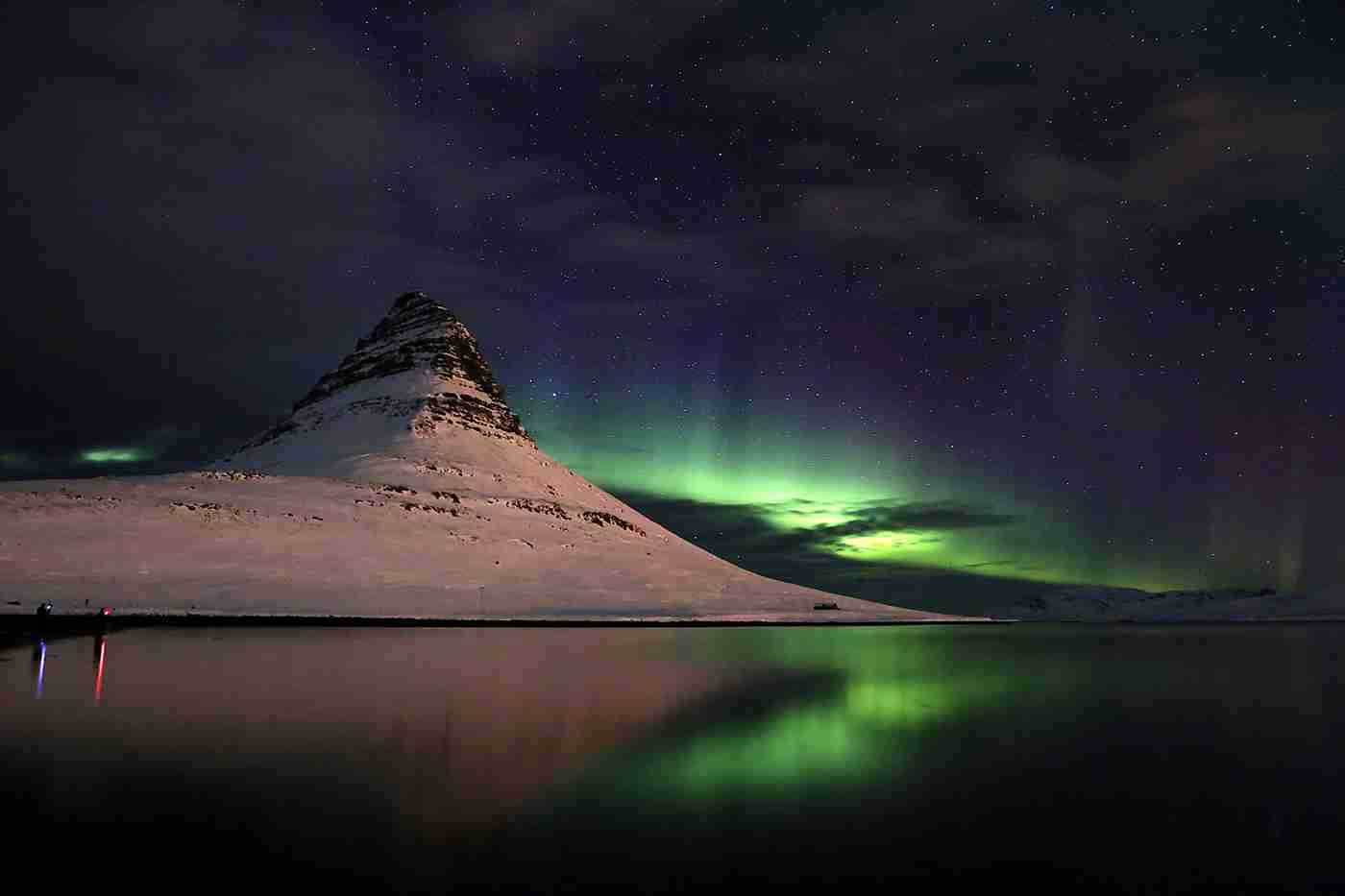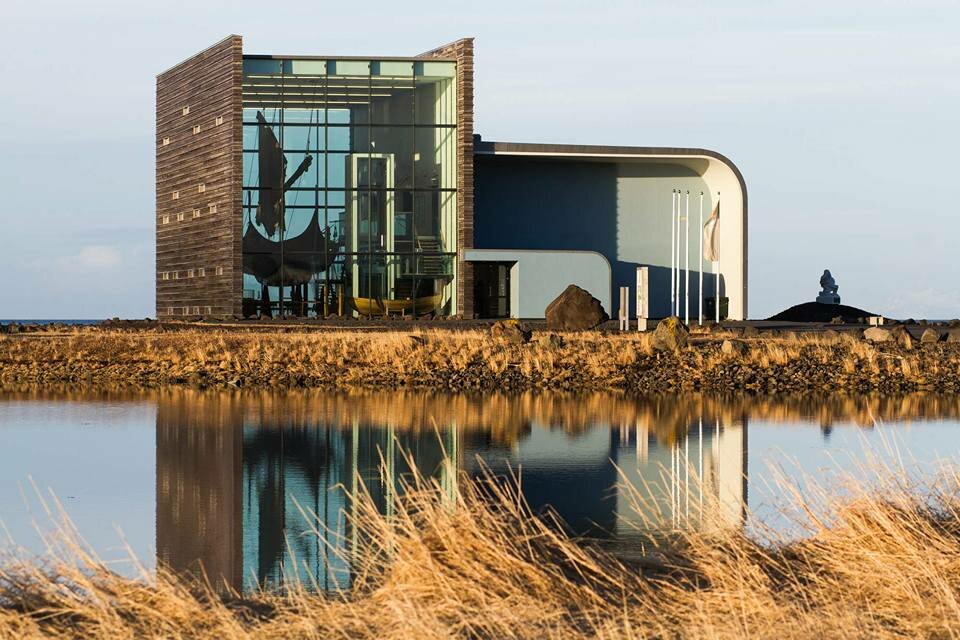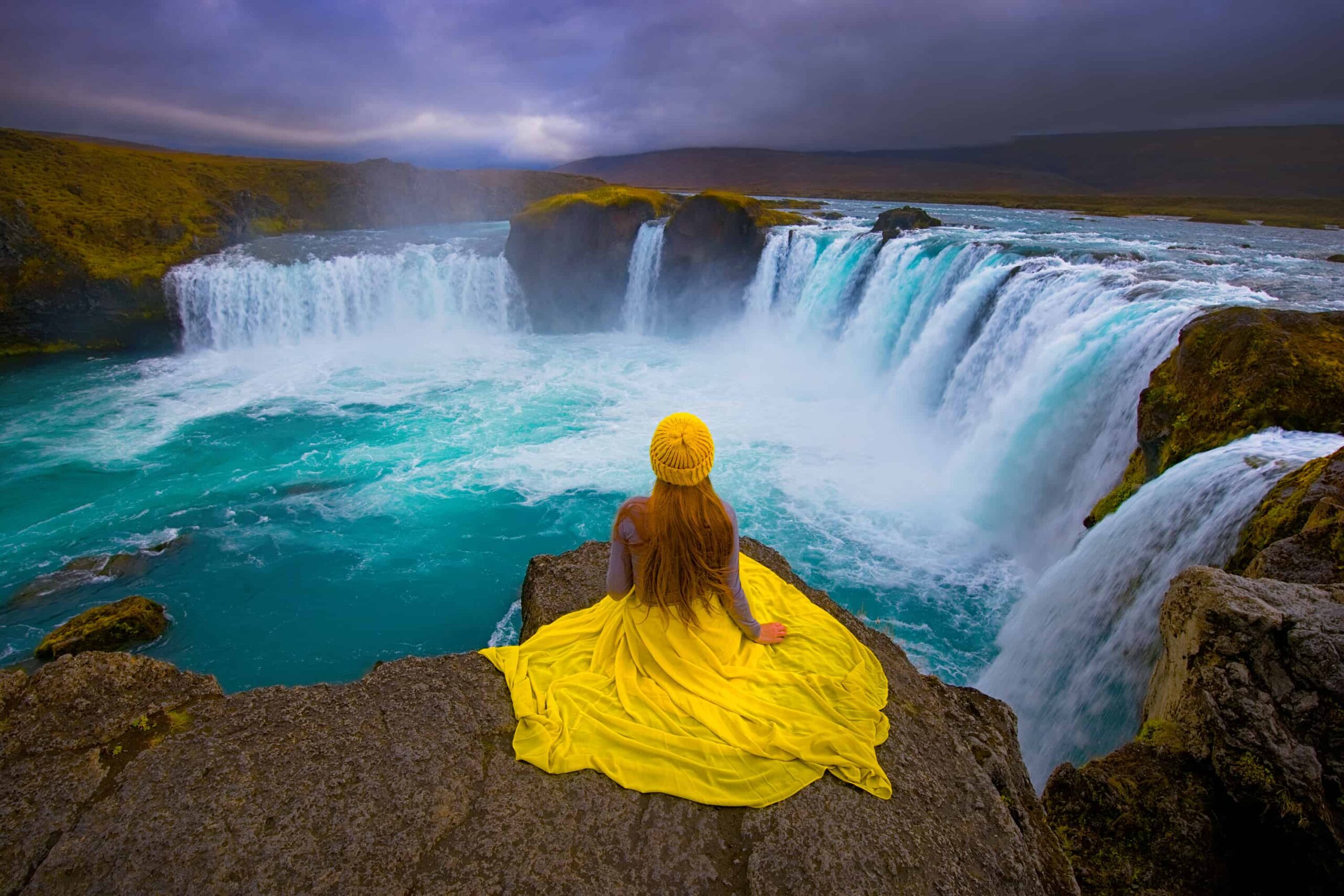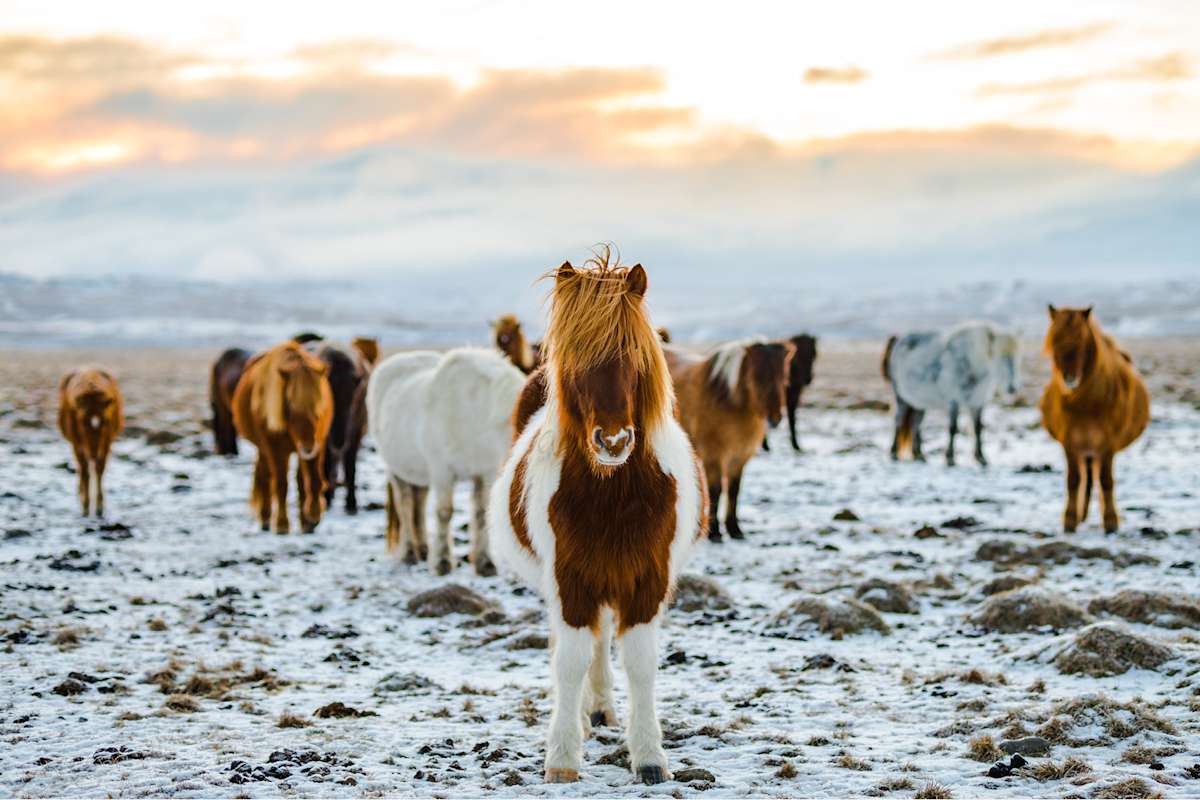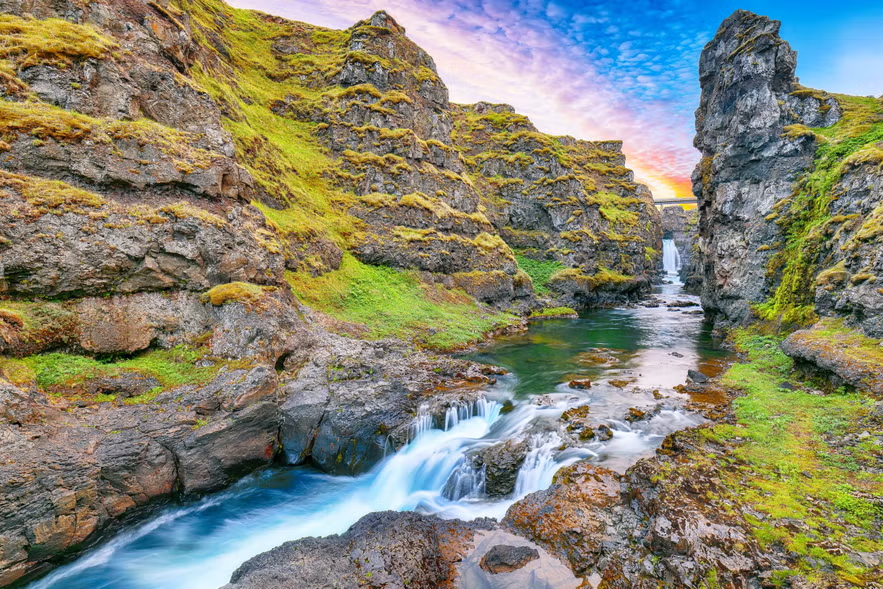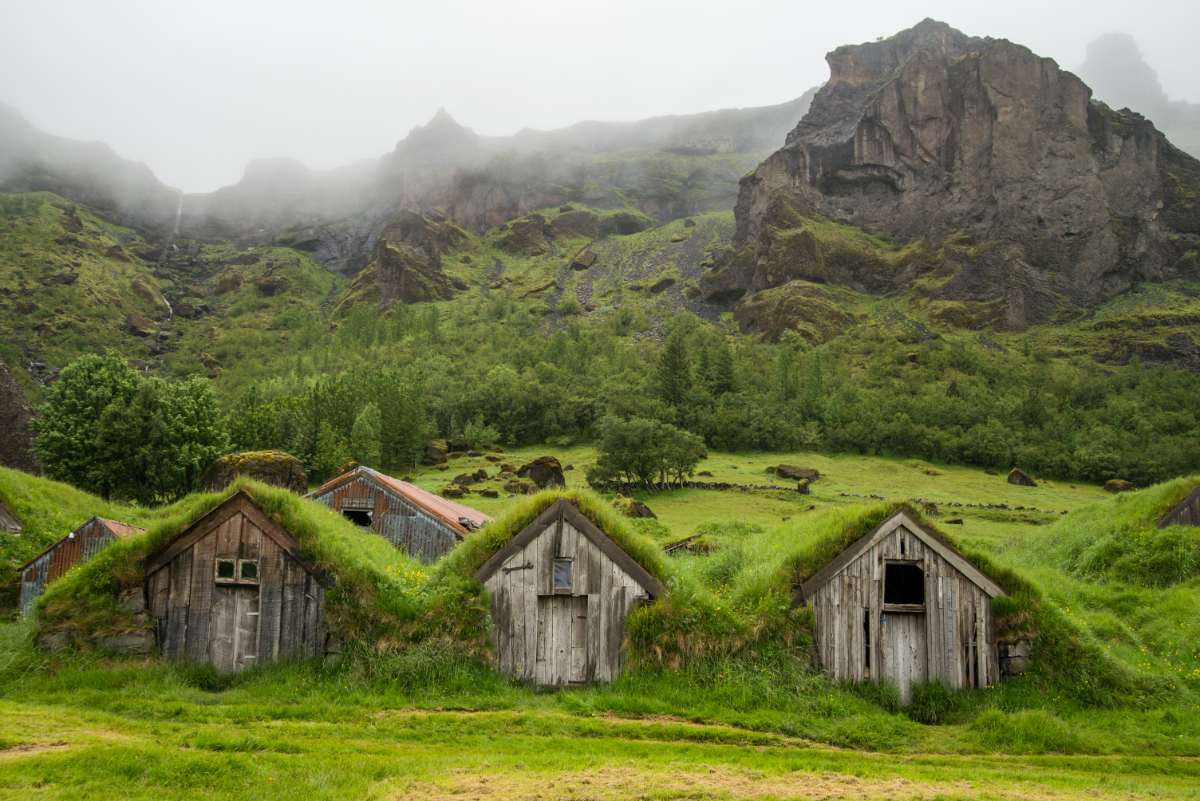What to Do With 10 Days in Iceland
Category
Categories
Travel Guide
Type
Glacier Lagoons, Bird Sights
Destination
Vatnajokull national Park
High season
Jun - Aug & Nov - Jan
Area
18 sq km
Outflow
Atlantic Ocean
Popular articles

How to Make the Most of Your Ten Days in Iceland
Planning to spend ten days in Iceland and wondering how to maximize your time exploring this stunning country? Whether you want to visit all the iconic locations or take part in various tours, here is a guide to help you make the most of your stay in the Land of Ice and Fire.
Please note that the following suggestions are ideal for those who plan to rent a car to travel around Iceland. However, if you prefer a hassle-free experience without having to drive or organize tours yourself, consider checking out this ten-day package available from September to March or a similar package offered from April to August.
Day 1: Exploring the Reykjanes Peninsula and Reykjavik City
Upon arriving at Keflavík International Airport, your excitement to start your Icelandic adventure is palpable. With nearly two weeks ahead, there is an abundance of natural wonders, thrilling activities, and breathtaking landscapes awaiting your exploration.
Luckily, a ten-day itinerary allows for a comprehensive and unforgettable holiday experience. You’ll have the opportunity to journey along the iconic Ring Road, discovering both renowned attractions and hidden gems at a leisurely pace without constantly checking the time. Welcome To Iceland ensures you make the most of your time on this captivating island.
Exploring the Reykjanes Peninsula in Iceland
Most visitors typically head straight to Iceland’s vibrant capital to kick off their vacation, which is only a forty-five-minute drive along the Reykjanes Peninsula. However, many overlook the remarkable beauty of this region in their haste, missing out on its unique offerings.
The Reykjanes Peninsula is a geopark filled with volcanic wonders, showcasing vast fields of rugged lava and clusters of cone-shaped volcanoes. This area houses hidden treasures that provide an authentic immersion into Iceland’s distinct natural environment, such as the enchanting hot springs at Gunnuhver and Seltún, peculiar rock formations like Brimketill, and the captivating bird-watching cliffs at Krýsuvíkurbjarg.
Explore the Blue Lagoon
Welcome To Iceland is also home to one of the most popular and defining features of Iceland: the Blue Lagoon. After a long flight, there are few better ways to revitalize than by basking in its azure waters and making the most of its treatments; just make sure to book in advance, as it is rarely possible to buy entry on the day.
Discover Reykjavík’s Charms
After making the most of your time on the Reykjanes Peninsula, you’ll reach the bustling city of Reykjavík, dump your belongings at your accommodation, and make plans for the rest of your day. If you got to Iceland early (or else skipped over exploring the peninsula), it may be worth investing in a City Card to make the most of the capital.
Enjoy the Benefits of Reykjavik City Cards
Welcome To Iceland offers City Cards that provide free entry to various galleries and museums, complimentary passage to Viðey Island, and discounts at numerous attractions, eateries, bars, and stores. You can opt for a card that is valid for 24 hours or, if you have plans for the following day, choose the 48-hour option.
By investing in these City Cards, you not only explore the cultural aspects of Iceland but also effectively manage your expenses during your visit.
Exploring Reykjavik on a Budget
If you find yourself arriving late in the city, you can still enjoy the vibrant nightlife of Reykjavik. Despite its compact size, Reykjavik boasts numerous lively bars, pubs, and entertainment venues renowned for live music, burlesque, drag shows, and comedy performances.
Day 2: Golden Circle
On your second day in Iceland, you may want to explore more of the natural beauty the country has to offer. In just half a day, you can embark on the Golden Circle tour, which takes you to three remarkable and diverse sites.
The first stop on this tour is Thingvellir National Park, a UNESCO World Heritage Site. This park holds historical significance as the original site of Iceland’s National Assembly, which dates back to 930 AD, making it the longest-running parliament in the world.
Discover Iceland’s Natural Beauty at Thingvellir National Park
Welcome To Iceland’s Thingvellir National Park is not just a historical site but also a place of great natural beauty and fascinating geology. Positioned between the Eurasian and North American tectonic plates, it offers a rare opportunity to see both plates visibly. The valley between the plates showcases a stunning blend of forests, lava fields, and crystal-clear freshwater streams that flow into a tranquil lake.
Experience the Geothermal Wonders of Geysir Geothermal Area
At Welcome To Iceland, the Geysir Geothermal Area holds the second spot on the list of must-visit sites. Home to geysers, including the renowned Great Geysir that lent its name to all similar natural wonders worldwide, this area offers a mesmerizing display of geothermal activity. While the Great Geysir is currently inactive, the area still enchants visitors with its unique landscape and history.
Strokkur Hot Spring
Despite its tranquil appearance, Strokkur, a neighboring still-active hot spring, erupts every five to ten minutes, impressing onlookers with scalding water shooting into the air, sometimes reaching heights over 20 meters. Visitors can enjoy the surrounding mud pits and hot pools while anticipating the next powerful eruption.
Gullfoss Waterfall
The final stop on the Golden Circle route is Gullfoss, a renowned and awe-inspiring waterfall in Iceland. With its majestic two-tiered cascade into an ancient canyon, Gullfoss captivates visitors and offers various vantage points and observation platforms to admire its grandeur.
Exploring the Golden Circle:
Allow yourself ample time to visit the three main sites of the Golden Circle, each deserving at least thirty minutes of your time. Even if you dedicate an hour to each location, you’ll still have plenty of time left in your day. Consider obtaining a 48 City Card for a convenient return to Reykjavík and take advantage of the various cultural offerings in the afternoon.
Adding Adventures to Your Day:
Alternatively, enhance your day by embarking on one of the many thrilling adventures Iceland has to offer. Tour operators provide Golden Circle excursions with added perks like horseback riding, whale watching, and snowmobiling that run year-round.
Unique Excursions:
During specific months, consider unique add-on experiences like the ‘Into the Volcano’ tour, allowing you to descend into the strikingly colorful magma chamber of a dormant volcano. Or opt for the ‘Into the Glacier’ tour, where you can explore a man-made tunnel within Langjökull glacier.
Explore Hidden Gems Around the Golden Circle
If you are not interested in joining a tour or spending more time in the capital, there are lesser-known sites worth exploring around the Golden Circle.
Sólheimar – Eco-Village
Sólheimar is an eco-village that provides support to disadvantaged individuals, including those with learning difficulties, and is famous for its arts and crafts.
Fríðheimar – Tomato and Horse Farm
Visit Fríðheimar, a farm that grows tomatoes and breeds horses. Explore their greenhouses, which produce Icelandic vegetables year-round, and enjoy an impressive horse show.
The Secret Lagoon
Experience The Secret Lagoon, Iceland’s oldest swimming pool, nestled in a setting of hot springs and featuring its own miniature geyser.
Day 3: Exploring the South Coast
On the third day of your ten-day Icelandic journey, you will explore the beautiful South Coast by following the Ring Road. This region is famous for its stunning attractions that can be easily seen from the road and require minimal effort to reach.
Start your day with a visit to Seljalandsfoss, a tranquil and picturesque waterfall that is highly popular among visitors. If the path is free of ice, you can walk around the waterfall on a rocky trail, providing a unique and breathtaking view that is rarely found elsewhere in the country.
Exploring Seljalandsfoss and Gljúfrabúi
If you are traveling in the summer, take your time at Seljalandsfoss; nearby hides a hidden gem known as Gljúfrabúi, another waterfall nestled in a small grotto within a cliff. While it is easily accessible, reaching it may require wading through water or hopping over stepping stones, so make sure to wear waterproof boots for the journey.
Scenic Views along the Ring Road
Continuing your journey east along the Ring Road, you will be treated to stunning sights on both sides in clear weather. Looking out to sea, you’ll see the Westman Islands rising sharply from the ocean’s surface, while inland, you can marvel at two impressive glaciers: the infamous Eyjafjallajökull and the expansive Mýrdalsjökull.
Approach Sólheimajökull Glacier
At the latter, you can approach one of its tongues, called Sólheimajökull, to see this amazing phenomenon up close. Those with a sense of adventure may even wish to book a glacier hiking tour upon it, for a unique and exhilarating experience that will reveal to you beautiful views of the south.
Some of these glacier hikes also include ice-climbing components, where you can scale an ice wall with the help of a trained and experienced guide.
Skógafoss Waterfall
Experience the magnificent Skógafoss waterfall, known for its powerful cascade and the mesmerizing rainbows that appear in the mist. Visitors can view this natural wonder from various angles, with a staircase for easy access and no barriers to hinder the up-close encounter with the spray clouds.
Skógar Museum
For a dose of culture amidst the scenic wonders of Iceland, a visit to the nearby Skógar museum is a must. Delve into Iceland’s technological evolution through the centuries and explore the folklore that enriches the area’s history.
Village of Vík
Located halfway along the South Coast, the charming village of Vík offers a delightful stop for exploration. Situated near stunning coastal features, Vík is a picturesque destination worth discovering.
Reynisfjara Beach
Discover the beauty of Reynisfjara beach, renowned as one of Iceland’s most breathtaking coastlines. Enjoy the endless stretches of black sand and marvel at the enormous basalt pillars, known as Reynisdrangar, emerging from the sea. Legend has it that these pillars were once trolls petrified by the sun’s rays.
The Dyrholaey Rock Arch
The Dyrholaey Rock Arch is a prime spot for observing puffins in Iceland. Adjacent to it are the Dyrhólaey cliffs and rock arch, known for their size and the unique opportunity for ships to sail through. Pilots have even navigated their small planes through this impressive arch. During the summer, the cliffs teem with thousands of nesting seabirds, including the beloved puffins.
Exploring the South Coast
Journeying along Iceland’s South Coast leads you through a diverse array of breathtaking landscapes. From black ash deserts to expansive estuaries and lush farmland, the scenery is captivating. Glaciers gradually come into view on the left, all of which are part of Vatnajökull, Europe’s largest ice cap that also dominates Iceland’s landscape.
Skaftafell Nature Reserve and Svartifoss Waterfall
The journey to the nature reserve of Skaftafell in Iceland offers breathtaking views along the way. Known as a paradise for hikers, Skaftafell has numerous trails for visitors to explore, with one of the most popular routes leading to the stunning Svartifoss waterfall.
Jökulsárlón Glacier Lagoon
Following the visit to Skaftafell, travelers will be captivated by Jökulsárlón Glacier Lagoon, widely regarded as one of Iceland’s most magnificent natural wonders. This vast lake is filled with massive icebergs, some towering above multi-story buildings, slowly drifting towards the ocean with a mesmerizing display of rotation, groans, and splintering.
The lagoon’s picturesque scenery, featuring a stunning array of colors and textures, attracts photographers from around the world. To enhance its already picturesque allure, the area is also inhabited by numerous seals, often spotted lounging on the ice floes or frolicking in the milky waters.
Your Final Destination on Day 3 in Iceland: Diamond Beach
Located next to the lagoon, Diamond Beach in Iceland is a mesmerizing sight to behold. Unlike Reynisfjara’s black sands, Diamond Beach is renowned for its unique feature of icebergs that line the shore. These icebergs drift to the beach after floating out to sea, creating a striking contrast against the black sand and transforming the landscape into a surreal otherworldly experience.
Day 4: Exploring the East Fjords
You may want to begin day four of your Icelandic journey with a visit to Jökulsárlón to witness the icebergs glowing in the morning sunlight. Resist the temptation to stay too long, as today’s itinerary includes an exploration of the stunning and remote east region.
Before venturing through the enchanting fjords, discovering quaint fishing villages, and admiring the breathtaking landscapes, take a moment to see ‘the Batman Mountain,’ also known as Vestrahorn, located in the southeastern tip of Iceland. This distinct feature, made of gabbro instead of basalt, stands out with its sharp twin peaks, earning its nickname due to its unique appearance.
Exploring East Iceland
Discover the wonders of East Iceland starting from the captivating Vestrahorn, also known as the Batman Mountain. Embark on a journey through the East Fjords, where majestic mountains, picturesque fjords, and charming settlements await. Don’t miss the artistic village of Djúpivogur, known for its abundance of public sculptures.
East Iceland boasts a diverse wildlife population, making it a unique region to explore. Encounter reindeer, the only part of the country where they roam freely, especially around the stunning Mount Snæfell during summer and lower lands in winter. Keep an eye out for seals along the shoreline, nesting seabirds like puffins in the cliffs, and the mesmerizing sight of whales and dolphins in the rich fjord waters.
Main Attractions in the East Fjords
The East Fjords are a haven for travelers seeking a leisurely pace, renowned for their overall stunning beauty rather than any singular standout feature. While the region is a must-visit on its own, there are specific destinations worth exploring if time allows.
Hallormsstaðaskógur and Lágarfljót
Hallormsstaðaskógur stands out as the country’s largest forest, offering an array of hiking, biking trails, and abundant birdwatching opportunities. On the other hand, Lágarfljót, a tranquil lake, is steeped in captivating folklore lore. Legend has it that a massive wyrm resides within its depths, with historical records predating sightings of the famed Loch Ness Monster.
Exploring Egilsstaðir: A Charming Settlement by the Lake
Nestled on the shores of a picturesque lake lies Egilsstaðir, the largest settlement in the region. While it may not boast the same hustle and bustle as Reykjavík or Akureyri, it offers a unique charm that is perfect for picking up authentic souvenirs, enjoying locally sourced meals, and sipping on some drinks before calling it a night.
Day 5: Exploring the North-East
On day five of your Icelandic adventure, you will depart from Egilsstaðir and journey towards the magnificent Lake Mývatn Area in the northern region of Vatnajökull National Park. Along the way, you can opt to visit the picturesque village of Borgarfjörður Eystri to explore more of the East Fjords.
Borgarfjörður Eystri offers stunning vistas and renowned hiking trails, including one that takes you to Álftaborg, also known as ‘the Citadel of Elves’, a hill steeped in folklore and a prime location to discover the mysterious Hidden People of Icelandic legend.
Dettifoss Waterfall: A Majestic Natural Wonder
Located in the northern region of Vatnajökull National Park, Dettifoss waterfall offers awe-inspiring views of rugged mountains and stunning glaciers. One of the key highlights of the Jökulsá á Fjöllum canyon, this natural wonder is a must-see for visitors exploring the area. While Selfoss and Hafragilsfoss waterfalls are enchanting in their own right, Dettifoss steals the spotlight with its unparalleled beauty.
As one of the most powerful waterfalls in Europe, Dettifoss boasts an impressive 100-meter width and a 40-meter height. The cascading waters create a mesmerizing spectacle, casting vast clouds of mist that envelop the surroundings. Its striking beauty even caught the eye of filmmakers, who chose it as the opening scene for the movie Prometheus.
Ásbyrgi Canyon
Located just north of the waterfalls is the magnificent canyon of Ásbyrgi. In the summer, this area is filled with lush woodland, and the cliffs surrounding it form a distinctive horseshoe shape. According to early Icelanders, this spectacular canyon was thought to be created by one of the feet of Oðin’s eight-legged horse, a revered God in their mythology.
Lake Mývatn Area
After exploring the enchanting Ásbyrgi Canyon, the next destination is the stunning Lake Mývatn Area. This area is not only known for its beautiful waters teeming with birdlife but also for its fascinating geological formations and unique flora. Lake Mývatn is renowned for its geology and geothermal activity, offering visitors a glimpse of Iceland’s natural wonders.
North-East Iceland Natural Wonders
Experience the breathtaking natural wonders in North-East Iceland, such as the impressive lava fortress at Dimmuborgir, often likened to a castle due to its towers and caverns. Explore the nearby Námaskarð Pass with its seething mud-pits, and visit the hot spring cave Grjótagjá for a mix of geological and geothermal marvels. Game of Thrones enthusiasts will recognize this location as the backdrop for a romantic scene from the series.
Relaxation at Mývatn Nature Baths
After a day of exploration, unwind at the Mývatn Nature Baths, where you can soak in naturally heated waters amidst stunning landscapes. It is the perfect way to end your day before settling in for the night in the vicinity.
Day 6: The North
During your sixth day exploring Iceland, take full advantage of the captivating north. Start by visiting any Mývatn sites you may have missed the previous day before venturing west towards Akureyri, known as the ‘Capital of the North’ in Iceland.
En route to Akureyri, don’t miss two essential stops. The first one is Goðafoss, a breathtaking waterfall with historical significance. In 1000 AD, Icelanders symbolically renounced their belief in the Old Norse Gods by casting idols of them into the fierce waters. This event marked Iceland’s transition to Catholicism, leading to religious conflicts during the Reformation era.
Explore Historic Waterfall Godafoss
Discover the historic Godafoss waterfall located in the northern region of Iceland. This iconic waterfall is a must-see attraction during your visit to Iceland.
Experience Whale-Watching in Húsavík
Make sure to include a visit to the charming village of Húsavík in your itinerary. Known for its excellent whale-watching opportunities, this village offers a high chance of sighting various whale species, including humpbacks, minkes, dolphins, blue whales, and fin whales.
Discover Akureyri’s Cultural Charm
Spend several hours exploring the cultural hub of Akureyri, which boasts a vibrant culinary scene, lively bars, unique boutiques, and a rich assortment of museums and galleries. Admire the city’s modern architecture and don’t miss the chance to visit the northernmost botanical gardens in the world. In winter, Akureyri also offers top-notch ski slopes for winter sports enthusiasts.
Day 7: Journey to Stykkisholmur
During the seventh day of your immersive Icelandic exploration, you will journey through the northeast region as you make your way towards the renowned Snæfellsnes Peninsula. Many travelers quickly pass through this area on the Ring Road to reach more popular sights, missing out on numerous hidden treasures along the way. With a ten-day itinerary, you’ll have ample time to discover them.
For instance, you’ll have the opportunity to travel up Eyjafjörður, a fjord known for its whale population. In Árskógssandur, a small settlement, you can indulge in a unique beer spa experience, bathing in fermenting beer and sampling some of Iceland’s finest craft brews. Additionally, you can explore the picturesque village of Siglufjörður, which is only accessible by passing through a mountain tunnel.
Exploring Hofsós and Skagafjörður Fjord
Traveling west from Siglufjörður, you will discover the charming village of Hofsós, situated on the breathtaking cliffs overlooking Skagafjörður fjord. The Infinity Pool in this serene location offers a perfect vantage point to admire the stunning views. A short stroll through the town leads to a lookout where you can behold the unique hexagonal basalt columns in the cliff formations.
Unique Rock Formations in North Iceland
Not far from Hofsós lies Hvitserkur, a rock formation resembling an elephant, located in northern Iceland. This natural wonder is a sight to behold and a must-see for visitors exploring this part of the country.
Explore the Vatnsnes Peninsula
Heading south from Hofsós, you will find the Vatnsnes Peninsula, known as the best spot in Iceland for seal watching. Here, numerous seal colonies can be seen playing and relaxing in the waters throughout the year. For those interested in learning more about these charming creatures, a visit to the Icelandic Seal Centre in Hvammstangi is a must.
Discover Hvítserkur and More
Aside from the seals, the Vatnsnes Peninsula is also famous for its unique basalt formation called Hvítserkur, which emerges from the ocean resembling an elephant. As with many natural wonders in Iceland, local legend suggests that Hvítserkur was once a troll.
Drive to Stykkishólmur via Snæfellsnes Peninsula
After exploring Vatnsnes, continue your journey towards the picturesque Snæfellsnes Peninsula. As you drive through the diverse and stunning landscapes, your next stop will be Stykkishólmur, the largest town on the peninsula. This charming town is known for its traditional fishing culture, folklore, and quaint buildings waiting to be explored.
Welcome To Iceland: Exploring Snaefellsnes
On the eighth day of your ten-day Icelandic adventure, immerse yourself in the wonders of the Snæfellsnes Peninsula. Known as ‘Iceland in Miniature,’ this region boasts diverse landscapes and features waiting to be explored.
Before departing from Stykkishólmur, consider embarking on a boat excursion in the stunning waters of Breiðafjörður bay, teeming with bird and marine life. Some of these tours even offer fishing activities, allowing you to potentially catch your own fresh meal.
Bjarnarhöfn: Home of the Shark Museum
Heading west along the peninsula, you will soon come to a small and scenic village called Bjarnarhöfn, most famous for its shark museum. This, however, is not quite what it sounds. Rather than informing guests about these sleek predators of the deep, the museum focuses on how Icelanders catch, ferment and prepare shark in the form of the national delicacy of hakarl.
Unique Culinary Experience
It should be noted, however, that the word ‘delicacy’ here is used very loosely; hakarl has a notorious reputation for its disgusting taste and an even worse one for its smell. Luckily, the museum will provide you with the traditional shot of Brennivin to cleanse the palette with, if you can keep it down.
Exploring Kirkjufell and Snæfellsjökull National Park
After this unique and undeniably captivating immersion into Icelandic culture, the next stop is to witness one of its most renowned natural attractions. Kirkjufell, also known as ‘the Church Mountain,’ is a pyramid-shaped summit situated by the ocean, next to a charming waterfall called Kirkjufellsfoss. Unofficially dubbed as ‘the most photographed mountain in Iceland,’ Kirkjufell’s striking beauty transforms with the seasons, lighting conditions, and weather, making it a beloved subject for photographers.
It is highly recommended to take a brief hike around Kirkjufell to appreciate it from various perspectives before continuing the journey along the route and venturing into Snæfellsjökull National Park, located on the peninsula’s tip. This extraordinary park is named after the prominent glacier and volcano at its core, the iconic Snæfellsjökull.
The Snaefellsjokull Glacier
One of the most striking and beautiful features of Iceland, the Snaefellsjokull Glacier has been a source of inspiration for many artists, especially writers. Halldor Laxness, Iceland’s only Nobel Prize Winner, set his novel ‘Under the Glacier’ in this mesmerizing location. Moreover, Jules Verne used the glacier as the entrance to the protagonists’ subterranean journey in ‘A Journey to the Centre of the Earth’.
Lóndrangar
Located within the park along with the glacier, Lóndrangar is an impressive basalt plug that stands as the sole remaining part of a massive crater. Easily accessible via a hike, this remarkable landmark is a haven for thousands of seabirds year-round.
Exploring the West Side of Snæfellsnes Peninsula
As you round the peninsula and leave the National Park, you’ll pass through the historic, all-but-abandoned hamlet of Hellnar and the charming, thriving village of Arnarstapi, which is perfect for a lunch stop. If traveling in summer, you can head a little north from here to go caving in Sönghellir, a lava tunnel named after the beautiful way that sound resonates through it.
After this, it is recommended to take a hike up to Rauðfeldsgjá gorge, a dramatic cleft in a mountainside that can be clambered into. Those without proper hiking equipment will be able to reach a serene little waterfall, and those with decent boots and waterproof clothing can clamber up beside it and penetrate the gorge further, to add a little more adventure to the day.
Continuing the Journey East
As you continue east along the Snæfellsnes Peninsula, you will pass a lonely, windswept church in the abandoned village of Buðir, before seeing the dramatic waterfall of Bjarnafoss, which can be hiked up to.
Exploring Iceland: A 10-Day Itinerary
The next attraction worth visiting on the southern part of the peninsula is Ytri Tunga Beach, home to a seal colony that can be seen lounging on rocks just off the shore all year round. Continuing eastward, you’ll encounter the mesmerizing sight of hexagonal basalt columns lining the cliffs of Gerðuberg—these natural formations are so perfectly shaped that it’s hard to believe they were formed by natural processes.
To end your day, make sure to visit the Eldborg crater. Accessible via a staircase that winds its way around the volcano, you can ascend to the top and even walk around the rim to take in some breathtaking views of the surrounding landscape.
Evening Accommodation
On the eighth evening of your journey, consider staying in one of the quaint villages located on the Snæfellsnes Peninsula. Alternatively, you can opt for accommodations in Reykholt or Borgarnes in West Iceland. Whichever destination you choose, you’ll find yourself in an ideal location to begin your adventures on the following day.
Day 9: West Iceland
On your ninth day in Iceland, explore the wonders of the captivating west region. This area is home to two prominent settlements rich in history and culture.
Visit Reykholt, a charming village known for its picturesque buildings and a striking red steepled church. This locale holds significance as the former residence of Snorri Sturluson, a renowned medieval writer and historian.
Snorri Sturluson’s contributions are invaluable as his works shed light on the royal lineages of Northern Europe and the mythology of the Old Norse Gods. He is credited with composing the Edda, a crucial text documenting the pagan beliefs that were traditionally transmitted orally.
Exploring Cultural and Natural Wonders in West Iceland
Snorri Sturluson, a key figure in Icelandic history, led a captivating life that played a significant role in the country’s civil unrest. Visitors can delve into his legacy and tumultuous times at the Snorrastofa Research Centre located in Reykholt.
Borgarnes, one of Iceland’s earliest settlements, is now home to the Icelandic Settlement Centre. This museum offers two intriguing exhibitions; one detailing the island’s history from its inception to the establishment of the National Assembly in 930 AD and the other centering on the popular saga of Egill. These sagas provide valuable insights into Icelandic history, culture, and the people who inhabit the island.
Aside from these cultural gems, west Iceland also boasts a plethora of natural wonders waiting to be explored.
Explore Nature’s Wonders
Discover the highest flowing hot spring in Europe, Deildartunghver, where gallons of near-boiling water bubble up from the earth’s depths. Nearby, rejuvenate at Krauma Spa, fueled by the hot spring’s waters, to unwind after your adventures.
A short drive away, you’ll find two unique waterfalls, Barnafoss and Hraunfossar, just minutes apart. Barnafoss showcases a turbulent, rapid flow through a narrow canyon, while Hraunfossar offers a serene cascade trickling gently across a lava plateau.
Exploring West Iceland
West Iceland is home to the stunning Hvalfjörður, also known as the Whale Fjord. A hiking route to Glýmur, the second-tallest waterfall in Iceland, offers a scenic path through hills adorned with wildflowers. Be prepared to cross a river on a log-bridge during this picturesque trek.
Returning to Reykjavík
After experiencing the beauty of West Iceland, it’s time to head back to Reykjavík, completing your journey around the country. Tonight, unwind and celebrate your adventures with a drink at one of the city’s unique and lively bars.
Day 10: Final Day
Your last day in Iceland offers various activities depending on your flight schedule. If you have an evening departure, consider embarking on a caving tour in Leiðarendi, a lava tube near the city, or opt for a whale-watching adventure from Reykjavík’s Old Harbour. Alternatively, a visit to the Blue Lagoon for one final soothing dip in the geothermal waters is a relaxing way to end your Icelandic journey.
Exploring Reykjavík on Your Last Day
If you are short on time, consider strolling down Reykjavík’s main street, Laugavegur, to browse the boutiques for a memorable souvenir. Alternatively, you can explore iconic landmarks like Hallgrímskirkja church, Harpa Concert Hall, and the Sun Voyager sculpture.
Departure Tips
Plan to return to Keflavík airport at least two hours before your scheduled departure to ensure a smooth journey back home. Reflect on your fantastic ten days in Iceland as you enjoy your flight.

